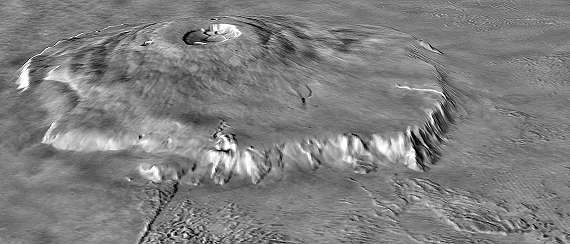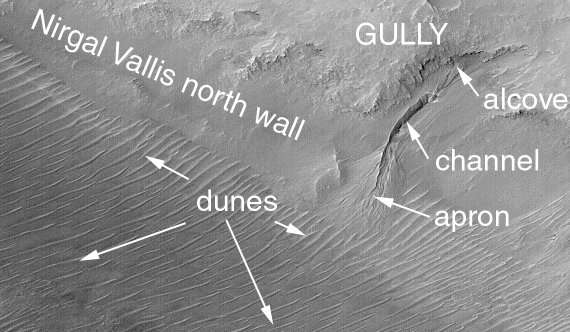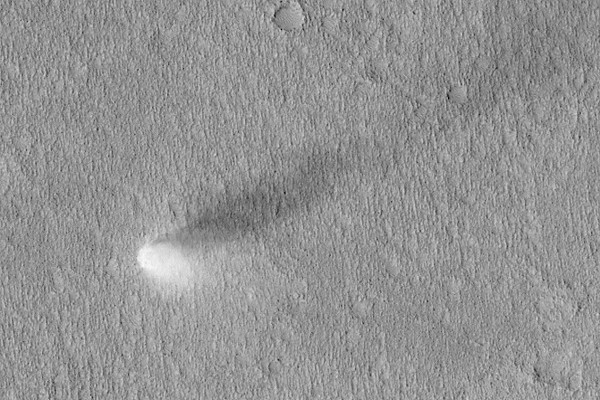| The Planet Quiz Show |
|---|
| The Planet Quiz Show |
|---|
Answer: Mars is a (1) small, (2) rocky planet. Mars (3) spins on its axis in a period of 24 hours and 37 minutes similar to Earth’s period of rotation. Its (4) axis is tilted almost the same amount as Earth’s axis; therefore, Mars has (5) seasonal changes just like the Earth. Mars also contains a northern and a southern (6) polar cap, and has a considerable amount of (7) frozen water in the polar regions, as well as permafrost beneath the surface of the planet. Mars has dried up (8) riverbeds, lakes, and saltwater oceans, and there is now very good evidence to support that Mars has (9) liquid water beneath its surface. Mars also has (10) inactive volcanoes, especially near its equator.
 |
| This picture shows a great deal of evidence that water flowed over the surface of Mars. The two large meteorite craters to the left were made by rocks hitting Mars from outer space. Then this region of Mars was flooded. The water flowed from left to right. This can be seen in the teardrop-shaped formations behind the three big craters. The water was carrying lots of debris (dirt) during the flood. When the water passed around the craters, its speed was slowed and it dropped its debris behind the craters. Later the smaller meteorite craters were made as well as the large crater in the box. The way the boxed crater appears, shows that there was water in the ground when the meteorite hit. The heat from the meteorite's impact melted the frozen water in the ground around the crater, causing the ground to flow. The crater walls also slumped or collapsed because the ground became too muddy to support the weight of the crater walls. |
 |
| Spring on the North Polar Cap of Mars: This magnificent photograph of Mars’ North Polar Cap was taken in 2002 by the Mars Global Surveyor satellite (upper left corner of the picture). Like Earth, Mars has polar caps which are composed of water. Unlike Earth, Mars also has frozen carbon dioxide, or dry ice, on its polar caps. Notice the clouds south of the polar cap. Cold air coming from the polar cap mixes with the warmer air over the ground, which has been heated by the sun, to form storm systems similar to Earth. On Mars, however, no rain or snow comes down from the clouds, but it does get windy. |
 |
| Olympus Mons is the largest volcano in the solar system, and it is found on the planet Mars. |
 |
| The Nirgal Valley on Mars has sand dunes which are all lined up. This shows that the Nirgal Valley has winds which are always blowing from the same direction. Also look at the channel. This was probably an area where water flowed into the valley, early in the history of Mars when conditions were warmer. |
 |
| A dust devil, like a mini tornado moves across the surface of Mars. |